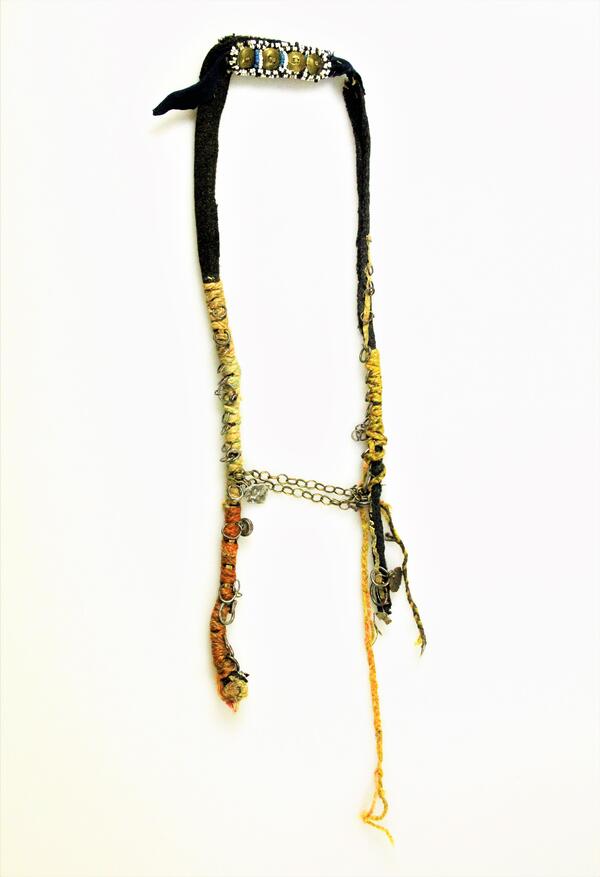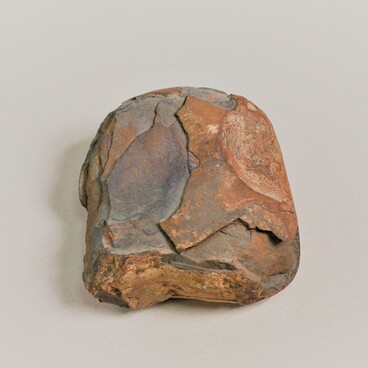In the old days, long hair was considered one of the signs of beauty, good health, and well-being among many peoples. Indigenous peoples of Western Siberia were no exception, so they did their best to lengthen the braids. In folklore, many deities, bogatyri (heroes from folk Russian legends), and their wives have braids. While bold people and hairless deities were considered weak and flawed. It is also possible to see the cult of long hair in material culture: even traditional dolls were made with braids to the waist, decorated with beads and pearls.
The Khanty believed that hair brought not only beauty but also spiritual power to a person. There were a lot of superstitions and rules related to hair. When giving a haircut, they made sure hair was not to be thrown in all directions, and then it was forbidden to scatter hair. It was believed that otherwise, the soul would wander looking for its hair.
Not only women but also men wore braids. In the early years of the Soviet regime, the Khanty’s braids were cut off forcefully since the authorities considered braids a thing of the past. However, when the Great Patriotic War was over, the tradition of wearing long hairstyles came back.
To visually lengthen their hair, women used faux braids. The basis of such an accessory was an oval plate that was covered with broadcloth and decorated with buttons and coins. Its frontal part was heavily ornamented with beads. Two straps made of broadcloth were attached to the occipital part on both sides. Broadcloth straps were wrapped around real hair so that real braids were covered with faux ones. There were not any specific rules for decorations, so everything was a matter of how wealthy and skilled a woman was.
The ethnographic collection of the Museum of the Ob River contains black broadcloth “put lantos” — this is a national name of such faux braids. They were made at the beginning of the 20th century. The braids are wrapped with intertwined woolen multicolored threads to which rings, a copper chain, castings, and buttons are fixed. Since olden times, it was believed that the ringing of metal could scare away evil spirits so metal items in faux braids were not only an accessory but also a woman’s amulet that should protect her from demons.
The Khanty believed that hair brought not only beauty but also spiritual power to a person. There were a lot of superstitions and rules related to hair. When giving a haircut, they made sure hair was not to be thrown in all directions, and then it was forbidden to scatter hair. It was believed that otherwise, the soul would wander looking for its hair.
Not only women but also men wore braids. In the early years of the Soviet regime, the Khanty’s braids were cut off forcefully since the authorities considered braids a thing of the past. However, when the Great Patriotic War was over, the tradition of wearing long hairstyles came back.
To visually lengthen their hair, women used faux braids. The basis of such an accessory was an oval plate that was covered with broadcloth and decorated with buttons and coins. Its frontal part was heavily ornamented with beads. Two straps made of broadcloth were attached to the occipital part on both sides. Broadcloth straps were wrapped around real hair so that real braids were covered with faux ones. There were not any specific rules for decorations, so everything was a matter of how wealthy and skilled a woman was.
The ethnographic collection of the Museum of the Ob River contains black broadcloth “put lantos” — this is a national name of such faux braids. They were made at the beginning of the 20th century. The braids are wrapped with intertwined woolen multicolored threads to which rings, a copper chain, castings, and buttons are fixed. Since olden times, it was believed that the ringing of metal could scare away evil spirits so metal items in faux braids were not only an accessory but also a woman’s amulet that should protect her from demons.



